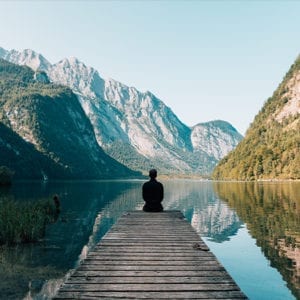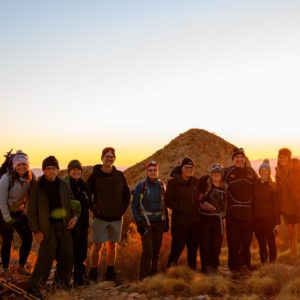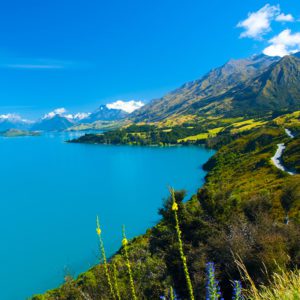Both have Himalayan views. Both begin in the city of Kathmandu, where deep-rooted tradition sits beside a bustling modernity. Both offer a once-in-a-lifetime adventure. So, which do you choose when deciding on your Nepalese charity challenge? Here, we offer up a taste of both to help you choose the trek that’s right for your organisation and supporters.
How long is each adventure?
Everest Base Camp
With a challenge duration of 11 days and a trip duration of 17, Everest Base Camp is a serious time commitment. You won’t be walking the whole time – the first full day is spent exploring Kathmandu and there are two days during the challenge spent acclimatising to the altitude. There are also exciting return flights from Kathmandu to our start and end point, Lukla, utilising an airstrip built by Sir Edmund Hillary and Sherpas in the 1960s.
Annapurna Circuit
For those concerned about time away, the Annapurna Circuit is more concise – it’s a six-day challenge on a trip that lasts 11 days. You still get to experience the majesty of the region, but in a briefer, although still challenging, format.
What will we see along the way?
Even if your research has been minimal, you know there’ll be mountains. However, nothing can prepare you for the majesty you’ll encounter on both trails.
Everest Base Camp
Because the ascent is continuous and immediate on the trek to Everest Base Camp, the peaks appear almost immediately. Epic Mount Everest appears on the second trekking day, but other favourites on the trail include the jutting form of Ama Dablam, Gokyo Ri (adjacent to the Ngozumpa glacier) and Kala Patthar, where, once at the top, you’re surrounded by four of the highest mountains on Earth: Pumari, Nuptse, Lhotse and Everest.
Annapurna Circuit
The terrain is more diverse on the Annapurna Circuit, with time spent among rhododendron forests (they bloom from March to April), vast tracts of pine and fir, and farmlands. The mountains here are all part of the Annapurna massif, including the breathtaking Machapuchare. The Annapurna trek is also better for those keen to see spring wildflowers, and is less crowded than the trail to Everest Base Camp.
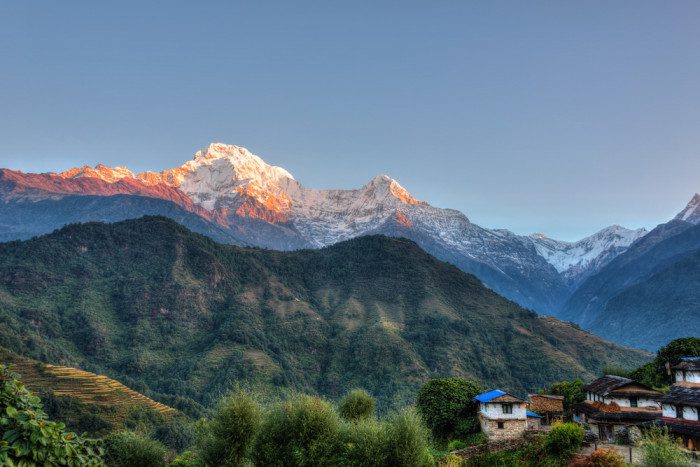
Who will we meet on the trail?
The Everest Base Camp trek takes place in the eastern Himalayas, a part of the world that is home to the Sherpa people. Known for their incredible trekking skills, the Sherpas are mostly Tibetan Buddhists and you’ll see their colourfully decorated stupas and buildings along the way. You can also find out more about them at the Sherpa Culture Museum and Sherpa Culture Photo Gallery on the acclimatisation day at Namche Bazaar.
In comparison, you’ll meet different groups of people in the Annapurna’s central Himalayas. The Chhetri people live in the subtropical lowland regions, and Hinduism is the central religion of this part of the world – in fact, Annapurna is the Hindu goddess of food and nourishment.
As you trek higher on Annapurna and into the Mustang region, you’ll encounter groups – like the Manangi, Magar and Thakali people – who have stronger cultural, ethnic and religious ties to Tibet.
What trekking experience will we need?
The Annapurna Trek is the easier of the two, although it’s still graded 4/5. Its highest elevation is 4,121m, and the first few days see the trail both ascending and descending. This is much easier on the body as it acclimatises. It also has paths that are, generally, in good condition. In some places, you even trek along jeep tracks.
Taking on the Everest Base Camp is a serious endeavour. The highest elevation is 5,589m, and the ascent is constant from the start. This makes it harder to acclimatise, although there are two rest days to give yourself the best chance to get used to the altitude.
If most of the supporters you expect to join the challenge have trekked at altitude before then Everest Base Camp might suit best. Otherwise, Annapurna is likely to offer all the challenge and adventure your supporters need.

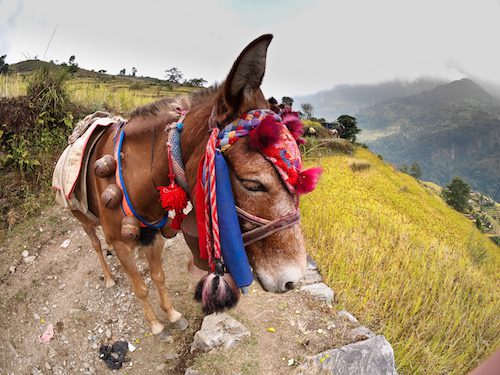
When is the best time to go?
Both adventures are available in the northern hemisphere spring and autumn each year, from March to May and again from September to November. October and November are the most popular trekking months in Nepal – the summer monsoons are gone, the dust has settled, the skies are clear, and the vegetation has been revitalised.
Everest Base Camp
Pre-monsoon season (i.e. spring) is the most popular time to trek to Everest Base Camp – during September the average maximum temperature is 15ºC. It’s much cooler at night, often dipping into negative territory. Early in spring, you may be caught in the occasional snow shower; that might also happen towards the end of autumn. The area is also prone to high winds.
Annapurna Circuit
The best time to hike the Annapurna Circuit is during spring and autumn. The temperatures on the lower reaches are quite warm, averaging about 15ºC, but cool off at night and as the altitude increases. You’ll rarely be dealing with snowfall.
Ready to go?
The starting point for both treks is the Nepalese capital of Kathmandu. There are no direct flights from Australia to Tribhuvan International, but you can travel with an airline like Malaysia Airlines or Singapore Airlines and connect in their respective capital cities. The journey from Sydney takes a minimum of about 18 hours.
Find out more
Check out the itineraries for both the Annapurna Trek and the Everest Base Camp adventures on our website. If you’ve got more questions and would prefer to speak to someone, call 1300 905 188.
Upcoming Nepal Adventures
Heart Foundation – Nepal Trek
Movember – Everest Base Camp Trek
The LBW Trust – Annapurna Community Trek
Liked this article? Here's some more you might like:





